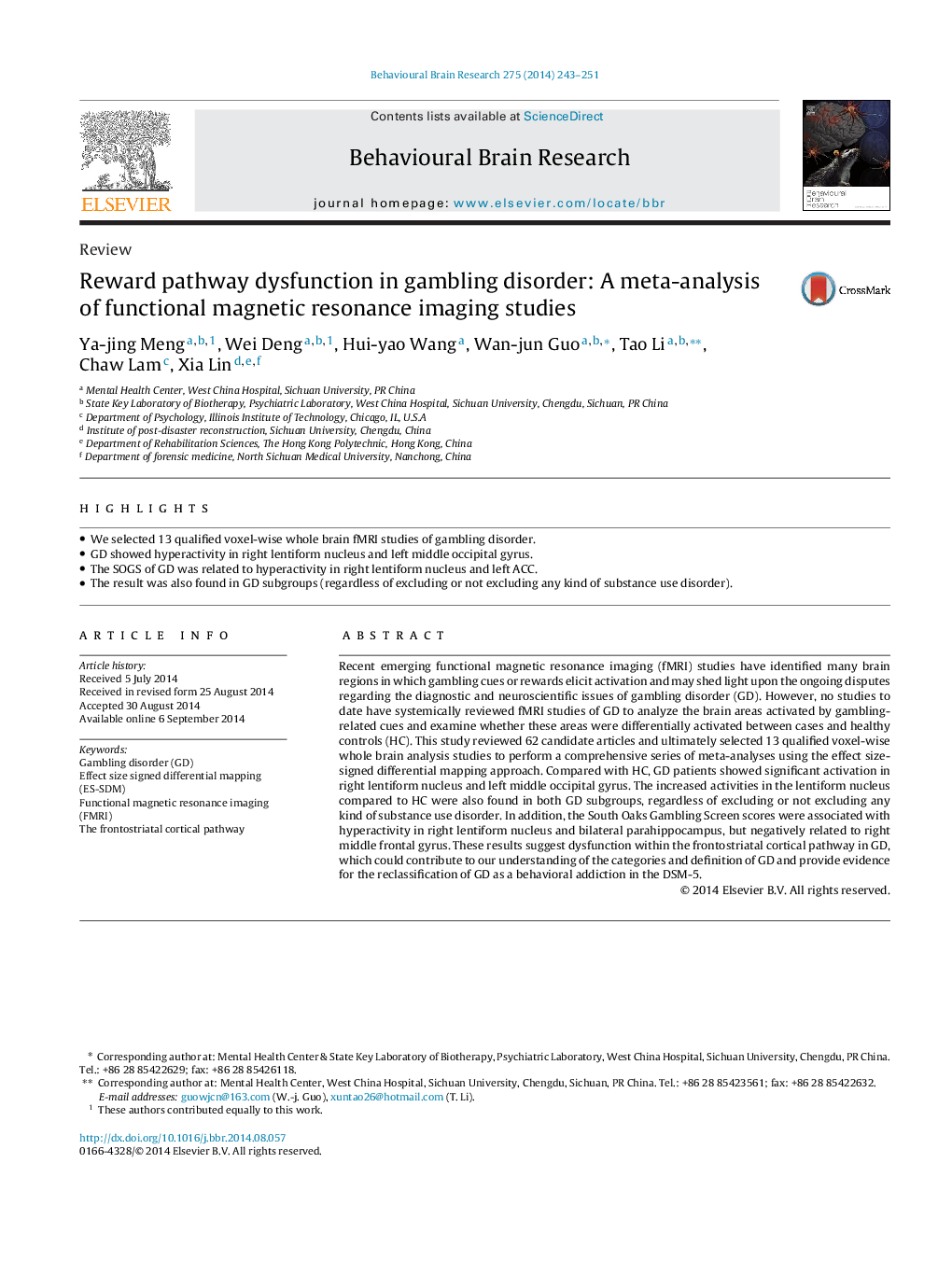| کد مقاله | کد نشریه | سال انتشار | مقاله انگلیسی | نسخه تمام متن |
|---|---|---|---|---|
| 6257812 | 1612957 | 2014 | 9 صفحه PDF | دانلود رایگان |
- We selected 13 qualified voxel-wise whole brain fMRI studies of gambling disorder.
- GD showed hyperactivity in right lentiform nucleus and left middle occipital gyrus.
- The SOGS of GD was related to hyperactivity in right lentiform nucleus and left ACC.
- The result was also found in GD subgroups (regardless of excluding or not excluding any kind of substance use disorder).
Recent emerging functional magnetic resonance imaging (fMRI) studies have identified many brain regions in which gambling cues or rewards elicit activation and may shed light upon the ongoing disputes regarding the diagnostic and neuroscientific issues of gambling disorder (GD). However, no studies to date have systemically reviewed fMRI studies of GD to analyze the brain areas activated by gambling-related cues and examine whether these areas were differentially activated between cases and healthy controls (HC). This study reviewed 62 candidate articles and ultimately selected 13 qualified voxel-wise whole brain analysis studies to perform a comprehensive series of meta-analyses using the effect size-signed differential mapping approach. Compared with HC, GD patients showed significant activation in right lentiform nucleus and left middle occipital gyrus. The increased activities in the lentiform nucleus compared to HC were also found in both GD subgroups, regardless of excluding or not excluding any kind of substance use disorder. In addition, the South Oaks Gambling Screen scores were associated with hyperactivity in right lentiform nucleus and bilateral parahippocampus, but negatively related to right middle frontal gyrus. These results suggest dysfunction within the frontostriatal cortical pathway in GD, which could contribute to our understanding of the categories and definition of GD and provide evidence for the reclassification of GD as a behavioral addiction in the DSM-5.
Journal: Behavioural Brain Research - Volume 275, 15 December 2014, Pages 243-251
